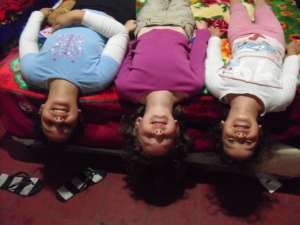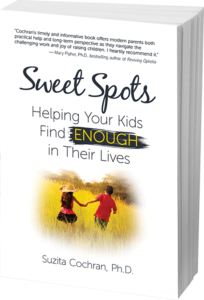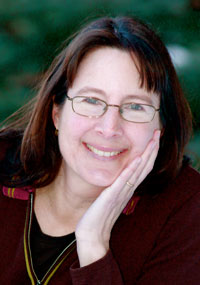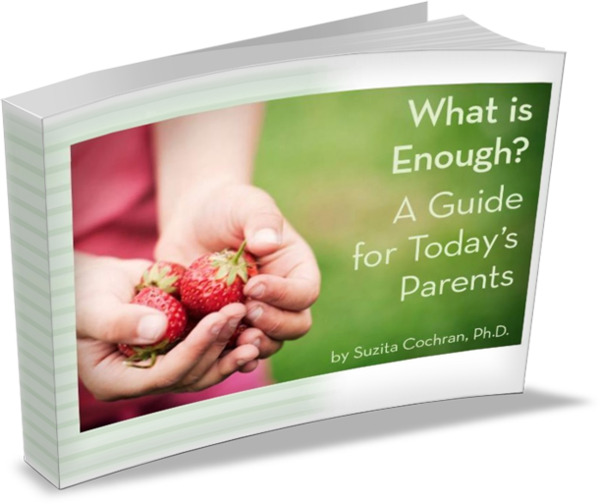 (Names of our Guatemalan friends have been changed.)
(Names of our Guatemalan friends have been changed.)
As I’ve mentioned in previous posts, our family has traveled to Central America for Spanish language immersion two summers in a row. Initially we went to Costa Rica which was a fitting first destination since we could drink the water there. When traveling with kids, this little detail makes life infinitely easier.
For our second trip, when our kids were 7, 10, and 12, we studied Spanish in Antigua, Guatemala for three weeks. In Guatemala we had a rich cultural experience, seeing and learning about Mayan traditions, and exploring ruins of old monasteries. As in Costa Rica we lived with a family, and this time we could only drink filtered water which wasn’t always easily available. This required some careful planning, but it wasn’t all that challenged us in Guatemala.
Our Wet Arrival
We entered Guatemala along with Tropical Depression Alex. Thus while we were learning our way around, it was pouring rain and fairly chilly. During those first days we also realized that homestays in Guatemala do not provide towels or soap. Sounds like a small thing, but it required us to trek across Antigua’s cobblestone streets to the massive and initially overwhelming mercado to buy these necessities.
The market had tiny stalls one after another selling every sort of thing, and was both in and outdoors. The inside was fairly dark and dank, due to all the rain. The crisscrossing aisles were narrow with no rhyme or reason as to stall placement: someone sold meat beside someone selling kids’ shoes. We quickly lost all directional bearings (even Todd, and this is rare). Stephen, Daniel, and I began to feel pretty claustrophobic. There weren’t exit signs or sunlight peaking though to suggest a way out. When we eventually escaped, we vowed never to return to the inside portion of the mercado without a guide!
While Costa Rica was, in our view, a mostly developed country, Guatemala, wasn’t there yet. The kids noticed this immediately and we spent much of the first afternoon attempting to pull them out of the homesickness that descended when they saw our room there. It didn’t have much to offer.
Our Home in Guatemala
Our homestay was organized around a long, narrow passageway. Part of this red-tiled walkway was covered and part was open to the elements. The family we lived with included two girls, Emelia and Nadia, 5 and 11, whom our 7 year-old Annie quickly befriended. They were very welcoming to her and their friendship with all of us was one of the highlights of our Guatemalan experience.
Upon returning from Spanish school each day, Annie would run off giggling with the girls to play some form of hide and seek or help them care for their baby cousin. Soon Annie became much more familiar with the nooks and crannies of our foreign abode than the rest of us.
At one point along the narrow central hallway there was a small door, only a third the size of the others. I thought it was a closet, since the door was sometimes cracked open and seemed to hold random supplies stacked every which way. But one day Annie informed me, “No mama, a 90 year-old grandma lives in that room.”
Not being comfortable exploring the room myself, I couldn’t verify this fact. I’d forgotten all about it until our final days at the homestay when the sun presented itself with some regularity. At that time a sweet, diminutive great-grandma was indeed wheeled out of the room to spend time in the sunlight. Visions of the great grandmother character in One Hundred Years of Solitude came to mind.
Here’s one of my emails home describing some of the trials of our daily living in Guatemala:
It’s amazing how much energy it takes to simply live life down here. Consider, for example, when it’s raining at night (a common occurrence) and a kid needs the bathroom. For this we must bring a flashlight, an umbrella, and flip flops, or we will literally come back soaked since we must walk outside to the bathroom. The flashlight has become even more crucial of late because after all this rain, a foot-long hole has opened up in the middle of the cement walk.
The other night while walking through the rain with most of the necessary items, minus an umbrella, I noticed the lemon tree had dropped perhaps eight small lemons onto the walkway. I was kicking them to the side so no one would sprain an ankle, when my oversized, green flip flop flew off my foot into a puddle. I had to momentarily decide, “What’s worse, leaving the flip flop and walking back with one bare foot (picture the floor of a public shower), or getting poured on in my only set of PJs?”
I chose the latter and was pretty wet upon returning to bed. And this doesn’t even address the issue of not using the water for brushing our teeth, not getting it in our mouths when we shower, not drinking it, not eating off of a plate that is still wet having been washed with water we shouldn’t drink… 
Spanish School in Guatemala
All the Spanish schools in Guatemala have a one-to-one teacher to student ratio. At our school, we sat around a pretty courtyard at small, wooden tables with white boards. There was a lovely stone fountain in the center with a jungle of plants tangled around it where we regularly spotted butterflies. But the courtyard could also be a tad noisy and distracting with perhaps 40 other tables of teacher/student pairs. Life in Central America was simply noisier than life in most of the US.
My Spanish teacher, Maria, was an energetic, recently divorced, 60 year-old Guatemalan woman who had lived the majority of her life in Antigua. She had three grown children and three grandkids. She also had a liberal view of the world and strong opinions. She soon told me she thought that kids in Guatemala didn’t read enough and didn’t have enough access to birth control, and that overpopulation was the main problem in the world.
Maria was on book three of the Twilight series and had read all of Harry Potter. We talked about Isabel Allende’s books a lot. She and my son Stephen enjoyed discussing the Harry Potter series (in Spanish).
It was rewarding to work daily with Maria for three weeks because we became quite close. Over time I asked her about her personal experiences during the Guatemalan Civil War. It was sad, frightening, intense, and fascinating to hear about that time in her life and the experiences of others she knew during the war. And it was challenging but gratifying to be able to understand the majority of her stories, since she told them in Spanish.
Spanish Language Learning the Second Time Around
Having taken some Spanish in Boulder, then studying intensively in Costa Rica, we found it much easier to get by in Spanish in Guatemala.
Here are some of my comments at the time on learning Spanish:
It’s always interesting to observe the ups and downs my mind swings to during a Spanish lesson. At times I’m sure I’m nearly there. I can get around. I can be understood. I can understand. Life in Spanish is good. But then moments later I am drowning in some aspect of the language that previously I never even knew existed, and feeling completely hopeless. It’s wild. And I’m sure it has something to do with the challenges of being in such a foreign place.
By the way, all of us are having really strange and vivid dreams down here. Magic realism type dreams. Are they just a Central and South American phenomenon, these colorful nighttime stories? If so, perhaps this is why their writing contains so many magical themes and images. Or more likely our brains are attempting to come to terms with what we see and deal with each day.
Annie learned Spanish both at school and at our homestay running around with Emelia and Nadia. They played cards in Spanish and I’d overhear her saying, “mi turno,” “tu turno,” and “uno momento,” among other phrases. One day Daniel asked, “Where are the scissors?” and Annie immediately repeated, “Donde estan las tijeras?” She was also more comfortable being in a very foreign place the second time around than she had been in Costa Rica.
Daniel’s Spanish learning in Guatemala reminded us of Stephen’s in Costa Rica. Often when we adults were speaking in Spanish he’d say, “I understood that!” He spent many hours conjugating verbs with his teacher, when he wasn’t taking a break to pick the sour, green-skinned variety of oranges hanging from delicate branches above his school table. Daniel’s interest in codebreaking came in handy when learning Spanish. I kept reminding him it was like one big code to figure out.
Stephen’s Spanish really soared. He and his teacher once read an article on the solar system and she informed me later that he’d updated her on all the facts the article omitted. He didn’t become fluent, but he became much more at ease using the language to get around.
Even more so than in Costa Rica, our experience living in Guatemala taught our kids that not all parts of the world are like their home town. Getting to know Nadia and Emelia allowed our three to stand in the shoes of other children who live significantly different lives. There were no playgrounds or soccer fields in Antigua, and kids there tended to play inside rather than out. Not only was this eye-opening for Stephen, Daniel, and Annie, but it helped them (as well as Todd and me) to appreciate many things about our home.
When the schooling part of our trip ended, we traveled to the Lake Atitlan area for a small getaway and to visit a non-profit we’d learned of in Boulder. We’d collected school supplies for them from people at home. It turned out to be a wonderful organization which deserves its own blog post. Read about it next week!
____
Recommended Reading:
The Family Sabbatical Handbook: The Budget Guide to Living Abroad with Your Family, by Elisa Bernick. I really enjoyed this book! It was helpful to read about the experience of the author’s family abroad, be reminded that a sabbatical can take many forms, and benefit from many of the lessons she learned “on the road.” This book also contains many helpful lists and websites.

 Sweet Spots: Helping Your Kids Find ENOUGH in Their Lives.
Sweet Spots: Helping Your Kids Find ENOUGH in Their Lives.


What a fantastic post. My children’s grandfather on their dad’s side is from Guatemala. It’s really interesting to me that you do this. I love when people make the effort to not just learn a language but its surrounding cultures and people.
Thanks for your comment! It’s been fun to see how much these experiences have stayed with my kids over time. My 1st grader was so proud that she found a book on Guatemala at our school library last week. My 6th grader told me that the read-aloud they were doing in one class was from a book taking place in Guatemala and one of the main characters was a Mayan grandfather. My son felt like he could understand the character on a different level since we’d traveled there.